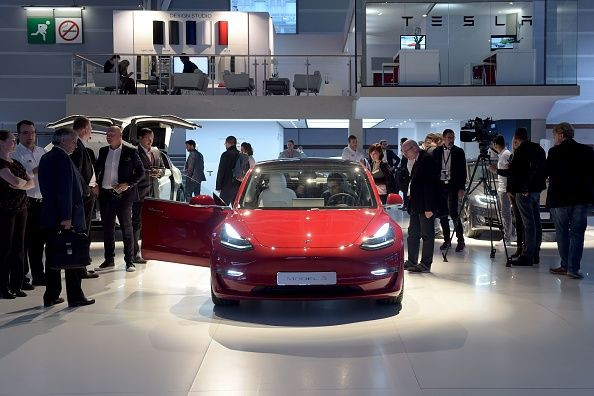Tesla's $2,000 Price Cut Is Bad News

In October, Tesla (NASDAQ:TSLA) reported blowout earnings for the third quarter. It managed to surpass its gross margin guidance for the Model 3 sedan by a wide margin while also clamping down on expenses. This reassured investors about the company's long-term earnings potential, causing Tesla stock to soar.
However, Tesla threw a wrench into that rosy narrative last week. Not only did its fourth-quarter delivery total come in slightly below analysts' expectations, but the company also announced a $2,000 price cut for all of its models in the U.S. This move raises new worries about how much demand there is for Tesla's pricey vehicles.
A disconcerting update
Tesla delivered 90,700 vehicles last quarter -- a new record for the company -- including 63,150 Model 3s. Production was slightly lower at 86,555 vehicles, with the discrepancy driven by the large number of Model 3s that were in transit to customers at the end of the third quarter.
While the headline numbers were not too shabby, Tesla's production growth is starting to slow. Model 3 production rose 15% sequentially, after nearly doubling sequentially a quarter earlier.
More surprisingly, Tesla announced that it is "taking steps to partially absorb the reduction of the federal EV tax credit," which fell from $7,500 previously to $3,750 for Teslas purchased in the first half of 2019. (The tax credit will be phased out entirely for Tesla at the end of this year.) On Jan. 2, it slashed the prices of all its vehicles by $2,000 in the U.S. -- effectively absorbing more than half of the lost tax credit.
What is Tesla up to?
In recent years, management has frequently noted that the company has achieved its strong growth with no marketing spending and no discounts. The implication has always been that once it had sufficient production capacity, Tesla could potentially drive sales even higher by promoting its vehicles.
The $2,000 price cut is effectively a discount on all of Tesla's vehicles. If there were abundant demand for its products, the company shouldn't have needed to shoulder any of the burden from the tax credit phaseout. This move will lead to hundreds of millions of dollars of lost profit this year (compared to selling the exact same vehicles for an extra $2,000 each). Given that Tesla has ambitious plans to expand production and add new models to its lineup, the automaker certainly could use the money.
In its sales release, Tesla pointed to "significant opportunities to continue to grow Model 3 sales by expanding to international markets, introducing lower-priced variants and offering leasing." That only makes it more puzzling that the company is cutting prices in its home market.
Part of the answer may be that it is more profitable for Tesla to mark down the prices of the vehicles it is currently selling than to introduce the long-promised $35,000 version of the Model 3. After all, the cheapest version of the Model 3 currently on offer still costs $44,000 after this price cut. The extra $9,000 more than covers the incremental costs of the larger battery and premium interior.
This would be just the latest tactic to boost sales of pricier Model 3 variants. Still, this doesn't completely explain the price cut. If Tesla could fill its production capacity at full price with a combination of international sales and leases, why didn't it just go that route?
Tesla's future may lie beyond the U.S.
In the decade since Tesla began operations, the U.S. has accounted for more than half of its sales. The company was even more reliant on it last year, as it hasn't started selling the Model 3 in most international markets yet.
However, the recent price cut is a sign that Model 3 demand in the U.S. isn't sufficient to support Tesla's lofty ambitions. (Of course, there will be a surge of sales when the $35,000 version becomes available, but the electric car pioneer can't afford to lean too heavily on its lowest-margin vehicle to drive sales volume.) Tesla is only building the Model 3 at half of its targeted production rate of 500,000 per year and it is still struggling to drum up demand at the Model 3's current price point.
The good news is that Tesla is about to dramatically expand international availability of the Model 3. Furthermore, it just broke ground on its first factory in China, a move that will dramatically improve its competitiveness in the world's largest electric-vehicle market.
Investors shouldn't panic over Tesla's recent price cut in the U.S. But it may be a sign that the automaker needs to put more emphasis on international markets for its future growth.
This article originally appeared in the Motley Fool.
Adam Levine-Weinberg has no position in any of the stocks mentioned. The Motley Fool owns shares of and recommends Tesla. The Motley Fool has a disclosure policy.




















